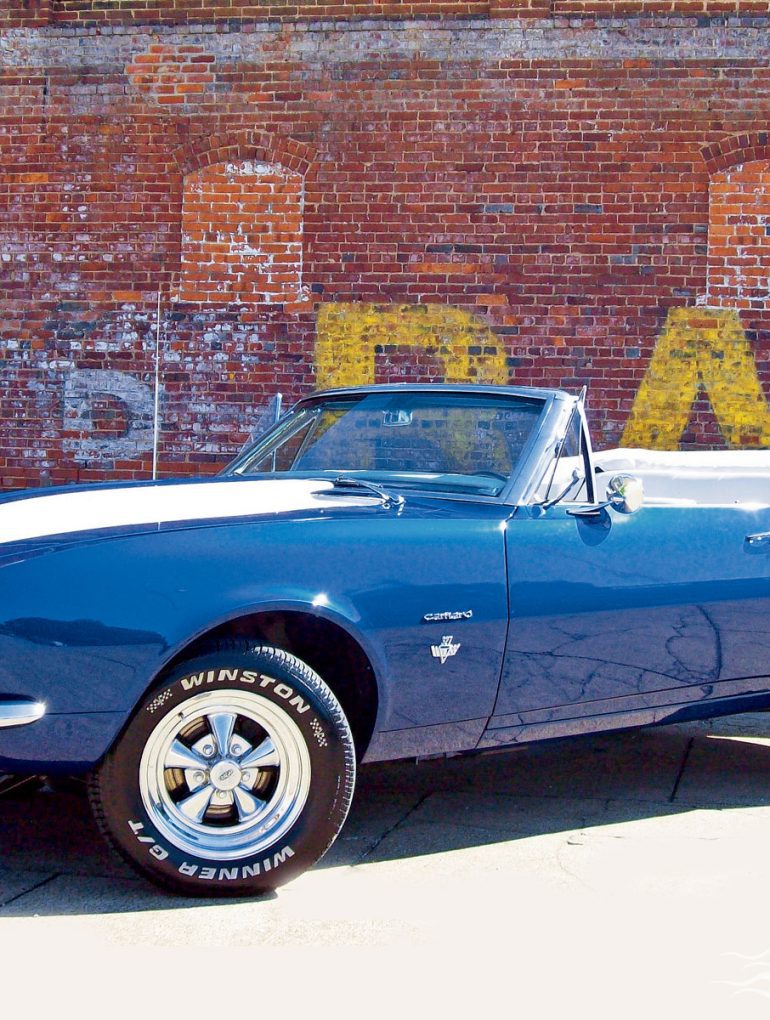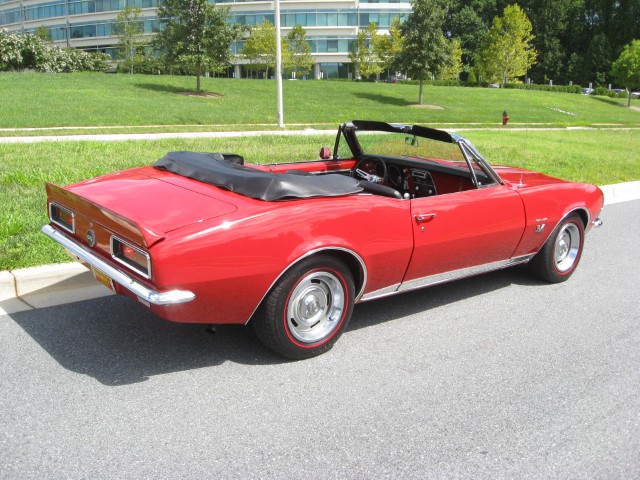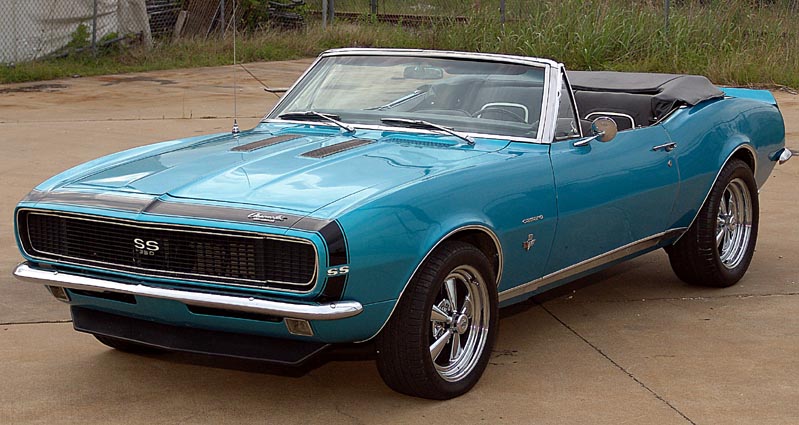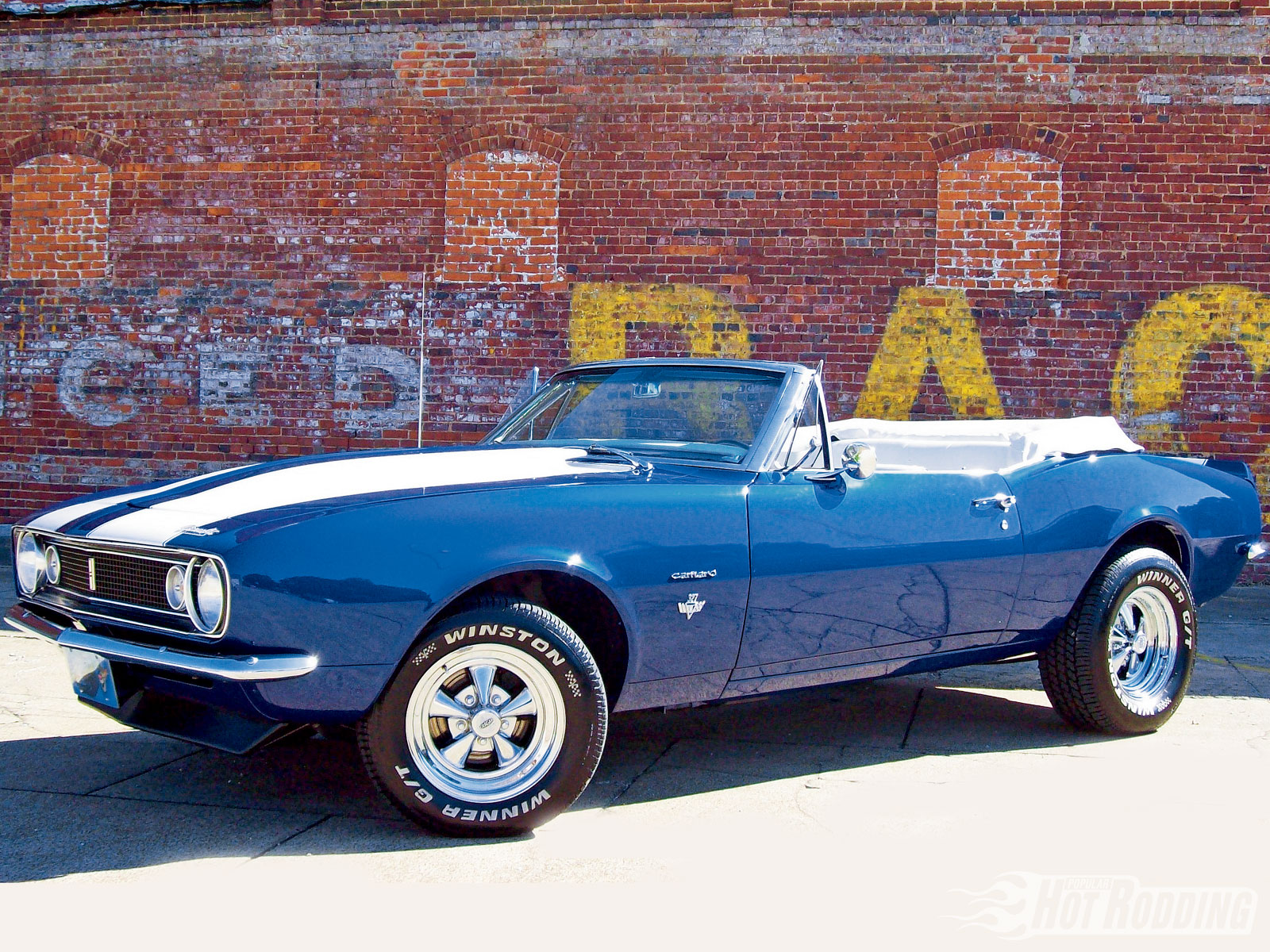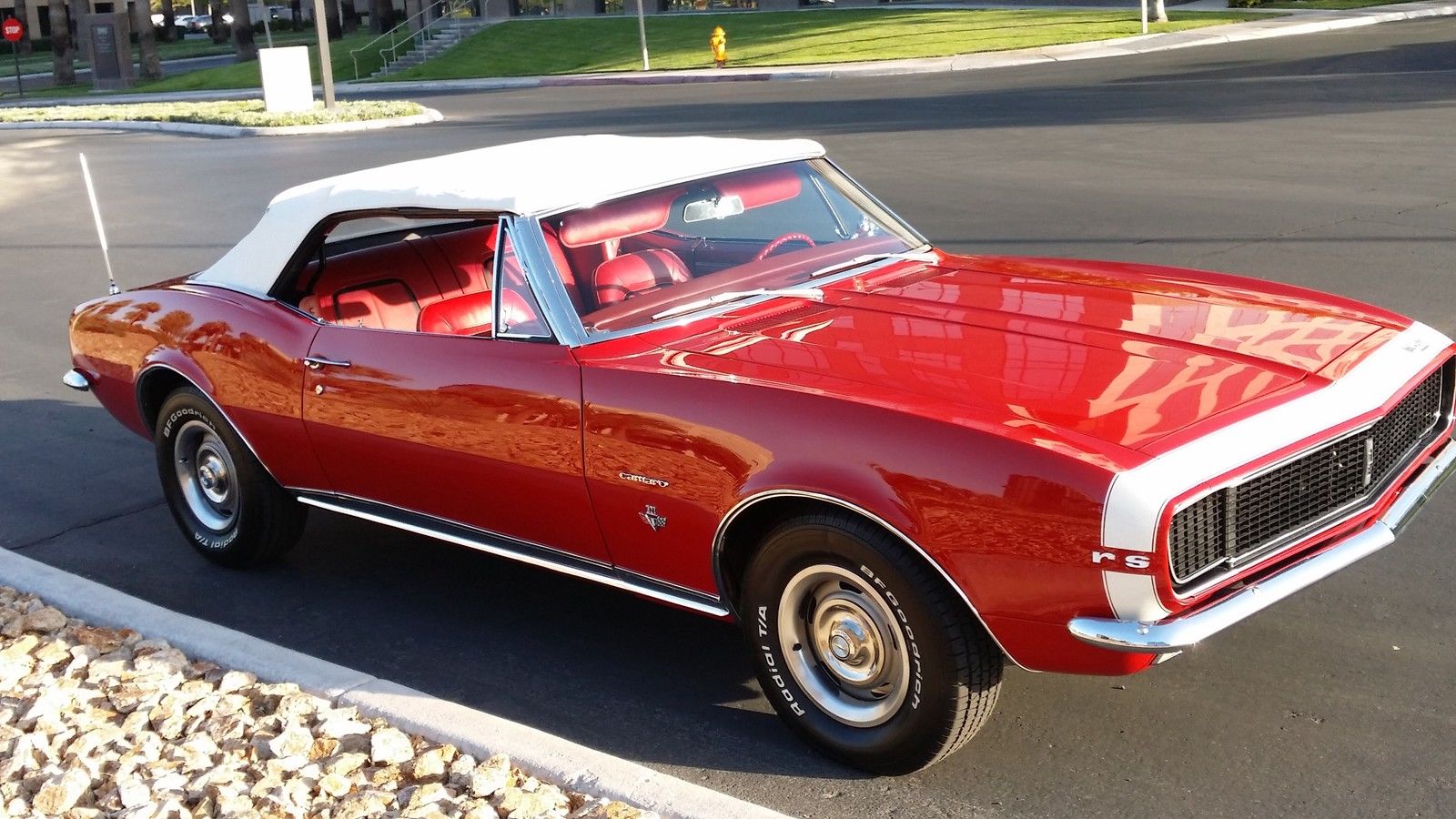1967 Camaro Convertible
The first generation Chevy Camaro’s introduction to the American auto industry in the spring of 1966 swept like wildfire. Determined to compete with the original pony car, the Ford Mustang, it started selling in September of the same year with a simple building-block philosophy: sell a basic machine and allow the customer to add their own extras.
Would-be buyers were faced with a long list of options and extras that included Strato-Ease headrests and Comfort-Tilt steering wheel. But buyers liked it that way. The Camaro was advertised as having the same conventional rear-drive, front-engine configuration as Mustang and Chevy II Nova. More than 10,000 units of RS, almost 200 thousand units of coupes, and more than 25,000 units of convertibles were sold in 1967.
Features that were popular and gave Camaro owners such pleasure included twin-lined body striping, hidden headlights, and matte black taillight bezels. Three passengers could be seated at the back, ‘though not comfortably enough. Even the center-mounted gas-cap had the RS emblem inscribed on it. All-red taillight lenses with black bezels were an RS feature.
The dashboard had the usual sixties fare, with plastic and mock wood-grain veneer. Color-keyed all-vinyl trim and Strato bucket seats came in as standard. The basic models came with 327 cid, the RS with the 350 cid. Customers liked the more European look of the Camaro and admired them for being less boxy.
The Indy ’67 and ’69 Indy 500s showcased the Chevy Camaro as pace cars.
Concerned with the runaway success of the Ford Mustang, Chevrolet executives realized that their compact sporty car, the Corvair, would not be able to compete favorably with the Mustang due to its rear-engine design, as well as declining sales, partly due to the negative publicity from Ralph Nader’s book, Unsafe at Any Speed.
Therefore, the Camaro was promoted as having the same conventional rear-drive, front-engine configuration as the Mustang and Chevy II Nova. Also, the Camaro was designed to fit a variety of power plants in the engine bay. The first-generation Camaro lasted until the 1969 model year and eventually inspired the design of the new retro fifth-generation Camaro.
The first-generation offered a standard, Super Sport, and Rally Sport editions. In 1967, the Z/28 model was added featuring stripes on the hood and trunk, styled rally road wheels, and a 302 cu in (4.9 L) V8 engine.
1967 Camaro Convertible Specs
- Body Style Two-door, four-seater convertible
- Construction Steel monocoque.
- Engine 327cid small block V8.
- Power Output 210 bhp at 4800 rpm.
- Transmission Three- or four-speed manual or two- or three-speed automatic.
- Suspension Front: independent; Rear: leaf springs.
- Brakes Drums with optional power-assisted front discs.
- Maximum Speed 110 mph
- 0-60 mph 8.3 sec.
- 0-100 mph 25.1 sec


